My 23 Favorite Picture Books to Teach Perspective
This post may contain affiliate links.
Teachers and parents, use picture books as mentor texts to teach perspective! Stories like these help you model for your students and children that our perspectives and the perspectives of different characters, including the narrator, are how we see the world and the events in it. These are my favorite books to teach perspective that I’ve used with children.
It’s easy to call this point of view, but from a literary standpoint, the perspective is a bit different. Point of view is the narrator’s voice: first, second, or third person.
Perspective is the lens through which we see things. This is DIFFERENT than the point of view.
Reading about characters with distinct perspectives gives children an opportunity to identify the character’s perspective and live there for a while. Noticing a character’s perspective is a good first step in noticing our own perspectives as well as the perspective of other people in our lives.
As the adage goes, walking a mile in another person’s shoes builds understanding and empathy.
Apply this understanding to higher-level thinking in both social skills, English class, and history. We want our kids to be able to analyze the perspectives of authors and of their peers. We also want kids to be able to take a stand for themselves — how do they feel about screen time? school lunches? bullying? Finally, in writers workshop, how can their perspective shift the narration of the story? Do they describe the bully with compassion or with anger?
I hope these book reviews give you a starting point for further discussion and activities.

Picture Books to Teach Perspective
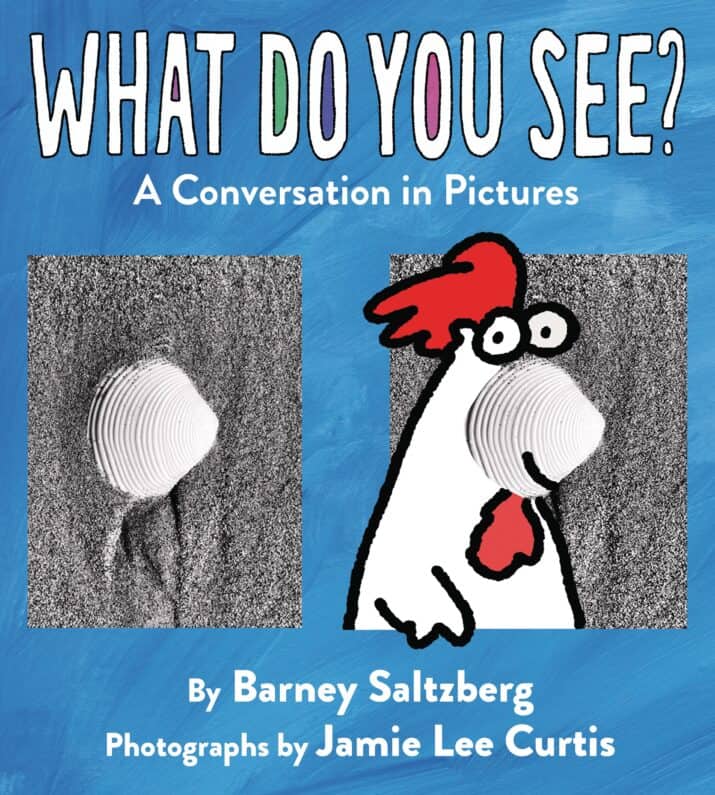
What Do You See? by Barney Saltzberg and Jamie Lee Curtis
What do you see in a photograph? Will you see what she sees or what he sees? Or will you notice something else completely? The authors show us photos and photos with drawings of their creative ways of seeing the world. This lovely book is an invitation to see the world with new eyes; to find the hidden pictures in everything whether you see flower fairies or dinosaurs.

They All Saw a Cat by Brendan Wenzel
Use this beautiful book to talk about perspective. The cat walks through the world. And is seen by different creatures, each who sees the cat differently depending on their background knowledge. It’s SUCH a cool book on point of view, especially for classrooms. LOVE.
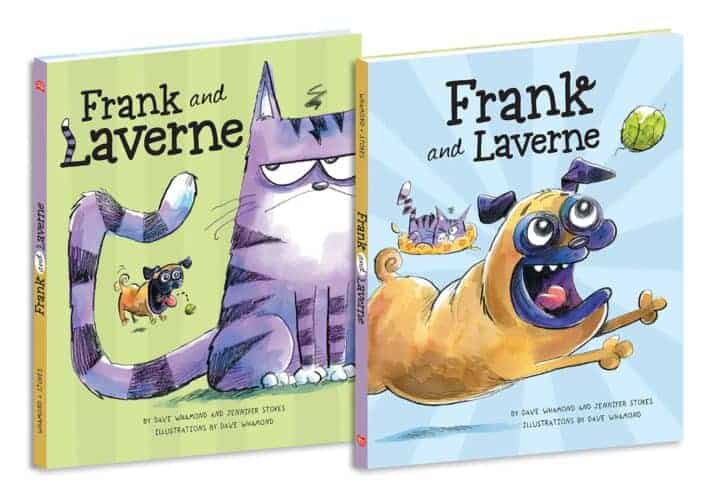
Frank and Laverne by Dave Whamod and Jennifer Stokes, illustrations by Dave Whamod
This book perfectly captures the differences between cats and dogs. It’s two different stories (flip the book to start the second story)– one told from the irritated cat’s perspective and the other from the loving dog’s. These classic opposites will have very distinct perspecctives on life.

Duck! Rabbit! by Amy Krouse Rosenthal, illustrated by Tom Lichtenheld
Have you seen this visual mind-bender? What are you seeing– a duck or a rabbit? Two off-screen characters have a conversation about the illustration which encourages us as readers to consider each person’s opinion and flip the image in our minds. Which is it? Can you pick?

Elephant in the Dark based on a poem by Rumi, retold by Mina Javaherbin, illustrated by Eugene Yelchin
A merchant arrives with a mysterious beast which he puts into a barn. The villagers are anxious to figure out what it is, so they each creep into the dark barn and feel part of the beast. One thinks it’s like a snake, the other thinks it’s like a fa, others see a tree trunk, and so on. But no one listens to the other people. The next day, the merchant leads the beautiful elephant out of the barn, but no one noticed or saw the truth because they were too busy fighting. What a great lesson to listen to others so that you can see the whole elephant — not just your small part.

The True Story of the Three Little Pigs by Jon Scieszka, illustrated by Lane Smith
You’ve only heard this story from the perspective of the three little pigs. Now, the wolf tells his side of the story! It’s hilarious as it deftly shows children how the story we are told depends on the narrator. I see this applicable in not just our English classes but also in history.
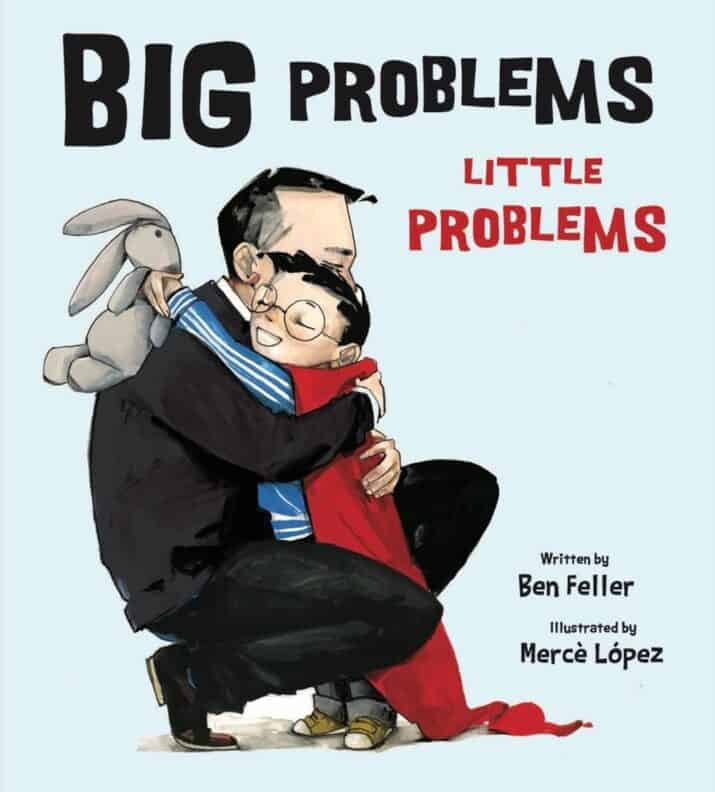
Big Problems, Little Problems by Ben Feller, illustrated by Merce Lopez
You’ll love this close father-son relationship as much as I do! As the father and son get ready for each day, they help each other find perspective about things that go wrong by asking if it’s a big problem or a little problem. The dad is open about his feelings of frustration and his strategy of deep breaths. When Sam accidentally spills Dad’s coffee, Sam asks Dad questions to determine if it’s a big problem or a little problem. Their questions are an important model for us all to help us reframe our perspectives!

The Cot in the Living Room by Hilda Eunice Burgos, illustrated by Gaby D’Alessandro
A little girl feels jealous of the kids who stay overnight at her apartment because their parents work nights. Those kids get to sleep in a cot in the living room. One day, she gets to sleep there and realizes that it’s not that fun. This helps her feel more empathic towards the visiting kids. Her selfish “it’s not fair” becomes an empathetic “it’s not fair” when she realizes that the kids probably prefer being in their own beds.

Days Like This by Oriane Smith Alice Gravier
See something from two different perspectives in oversized illustrations of a sunrise, strawberry mornings, chocolate afternoons, and evenings when the night has swallowed everything, among other scenes.
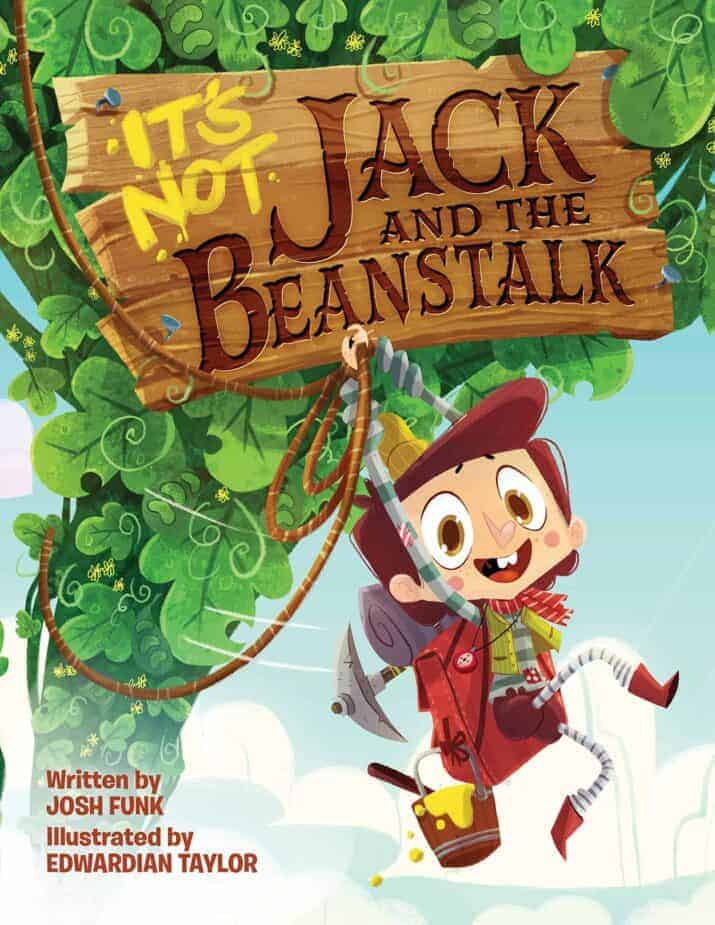
It’s Not Jack and the Beanstalk by Josh Funk, illustrated by Edwardian Taylor
On every page, the narrator of this hilarious story interrupts the narration to boss Jack around. Jack doesn’t appreciate it– nor does he like the whole story in general since he doesn’t want to be a thief and murderer. Finally, at the giant’s house in the sky, Jack stops following the story. He befriends the giant, makes him a taco salad, and goes to Cinderella’s house for a party. It’s the perfect updated version of Jack and the Beanstalk with a take-charge hero and curmudgeonly narrator.

XO, Exoplanet by Deborah Underwood, illustrated by Jorge Lacera
Get ready to laugh at this hysterical story with a poignant message about seeing multiple perspectives! When our solar system’s planets write a friendly letter to an exoplanet, their communication turns into a funny argument when the exoplanet tells our planets that THEY are actually the exoplanets. A visiting comet helps our planets to see that depending on how you’re looking at things, both arguments could be true. Letters, dialogue bubbles, and expressive illustrations capture the planets’ strong emotions.

The Incredible Shrinking Lunchroom by Michal Baby, illustrated by Paula Cohen
Readers will love how the principal teaches the students a valuable lesson about perspective, without telling them what the lesson is. In this humorous modern update of a classic Yiddish folktale, the kids complain that their lunchroom is too crowded. So what do you expect the principal to do? Probably not what she does. She adds more to the lunchroom: science projects, a learning zoo, and sports teams. Now it’s really crowded! Then, she takes out the things she added, and the students love the not-crowded space. Because their perspective has changed! And now they see things with new eyes and with gratitude.
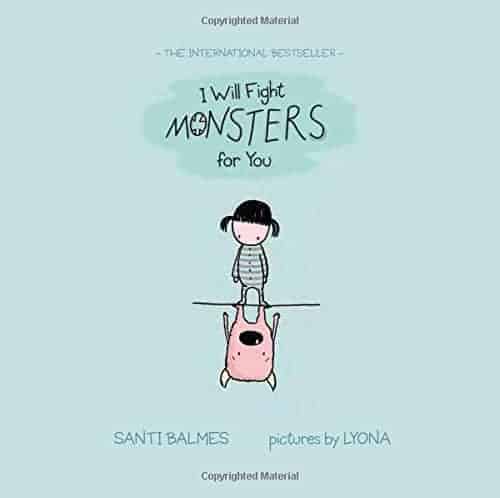
I Will Fight Monsters for You by Santi Balmes, illustrated by Lyona
It’s a parallel story of a young girl and a young monster who are both frightened about sleeping because of fears about each other. Can the little girl and monster come together and see each other as something not scary?

Monsters in the Fog by Ali Bahrampour
A donkey named Hakim travels up a mountain to give his friend Daisy a sweater he knit for her. He’s warned by a goat that there are monsters up the mountain. Along the way, he approaches different animals who look scary in the foggy conditions but once he gets closer, they’re not scary monsters. And then, they find his friend Daisy–who is a monster.

What the Animals Saw by Louise Greig, illustrated by Nicola O’Bryne
ANIMALS / PERSPECTIVE
See what the animals see from their eyes and in their lives in this lyrical, descriptive read aloud story. It might be the sight of their family or prey or predators. “A rhinoceros sees a rival. A mirror of himself. A hulk of head and horn.” Use this beautiful, interesting book to teach perspective, learn more about animals, and encourage a discussion of what it might be like to see things through other’s eyes!

The Catawampus Cat by Jason Carter Eaton, illustrated by Gus Gordon
A small gray cat walks into town slightly tilted to one side. At first the townspeople tried to straighten him out but that didn’t work. What did work was for the people to tilt and notice life differently? Which created all sorts of wonderful, happy results for everyone. You’ll walk (and see life) a little differently after reading this super special slanty picture story!

Snappsy The Alligator Did Not Ask to Be in This Book by Julie Falatko, illustrated by Tim Miller
Snappsy doesn’t agree to be in this story which means much of the story is spent arguing with the busy-body narrator. Very funny.

Breaking Cat News: Cats Reporting on the News that Matters to Cats by Georgia Dunn
These are hilarious, tongue-in-cheek cartoons of cats reporting the very latest news from their oh, so news-worthy lives. As you can imagine, they report breaking news about empty food bowls, the best sunspots, and the vacuum cleaner’s return, as well as life’s many mysteries. Good stuff, right?! What would the humans think about these same events?

Milo Imagines the World by Matt de la Pena, illustrated by Christian Robi
A powerful story that takes of the boy’s present reality and his imagination… Milo travels on the subway with his sister, his anxiety making him feel like a shook-up soda, even though it’s a weekly ride. He observes the people around him and in his notebook, draws and writes stories about them. They arrive at their stop and he’s surprised to see a boy that he noticed before is there, also– a boy wearing a fancy suit who he had made assumptions about. Seeing him in the line, helps Milo realize that you can’t tell people’s stories just by their appearance.
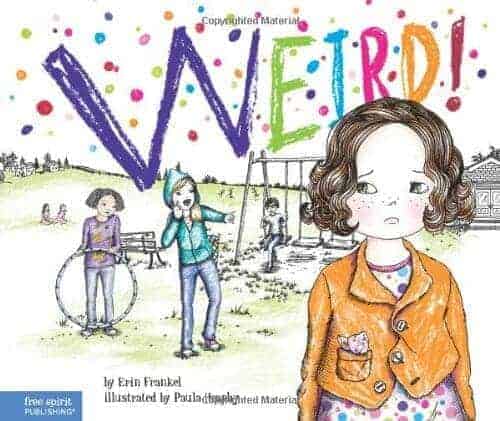
Weird (Book 1) , Dare! (Book 2), and Tough! (Book 3) by Erin Frankel
It’s the same situation told from different points of view, each in three different books. Weird! is Luisa’s story of being targeted by bullying. Dare! is Jayla’s story of watching the bullying as a bystander. Tough! is Sam’s story of being the bully. Isn’t this a cool concept?

Wagons Ho! by George Hallowell and Joan Holub, illustrated by Lynne Avril
Side by side stories in diary and scrapbook form share two girls’ experiences, both moving from Missouri to the West. One story takes place in 1846, the other, in the present day. It’s a fascinating comparison of what is the same and what is different from each girl’s different setting.
July & August The Wretched Rockies
1846
Some wagons are too heavy to go up and down the mountains. Many things must be given up in order to cross. The Rockies look like a graveyard of precious belongings left by many families going west.
Thursday
We cross the Rockies in Wyoming. Buddy is carsick from the curves.

The Cat Who Lived with Anne Frank by David Lee Miller and Steven Jay Rubin, illustrated by Elizabeth Baddeley
The story of Anne Frank is familiar to adults but pretty heavy to introduce to children. However, this picture book is a kid-appropriate introduction to Anne Frank’s story through the perspective of a cat.

A Tiny Brown Monkey on the Big Blue Earth by Tory Christie, illustrated by Luciana Navarro Powell
What a cool book about perspective, showing small to big, starting with a tiny brown monkey swinging from a branch in the jungle and moving to a crowded bus to a busy town on an ocean into outer space. Talk about a global perspective! Incredible artwork!







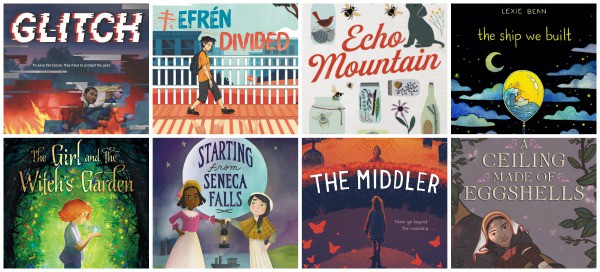




Hi Melissa,
I came across your site and really enjoy how you have laid out lists of picture books for different topics that we want our kids to learn. My wife and I have three boys (6, twin 4 yr olds) and we have been testing a lot with how to teach them concepts in a way that they understand and gravitate towards. Books are a great way to do that 🙂
The pandemic happened to coincide with when we were focused on teaching them listening and perspective taking (a bit more complex), and ended up with our family creating a children’s book together where the main character, a garbage truck, learns the same in a funny way. Has been a lot of fun, and my oldest has even led the charge to have it carried at several local bookstores!
We would love to send you free a copy and see if it might fit well with your list on perspective! And if interested more on the book is available at http://www.littleapplehouse .com
Thanks again for creating this site. It is a wonderful resource.
Cheers,
Matt Kirk
Thanks for reaching out! I’m not taking self-published books, but I wish you the best in your endeavors!